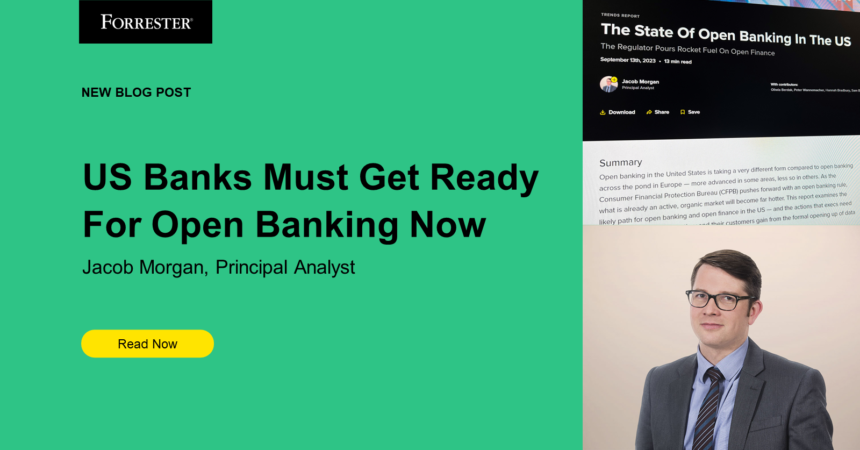Open banking is finally moving forward in the US, with the Consumer Financial Protection Bureau (CFPB) expected to formally propose a Rule on Personal Financial Data Rights in October 2023. US banks and financial services firms will have a limited window to respond and must consider the implications of — and start preparation for — this inevitable change right now. What is already an active, organic market will become far hotter — fast!
US Open Banking Blends Market + Regulation
The CFPB proposal will wrap a consumer right to data and an open banking framework around a market-led approach – necessary according to the CFPB to “resolve certain core issues because system participants are deadlocked or because existing approaches do not put consumers fully in the driver’s seat.” This regulatory oversight will afford greater protection, spur innovation, and empower consumers to take greater control of their financial lives – making it easier to move accounts. This will be game-changing for financial providers and will spur a raft of consumer-oriented innovation as banks look to prevent attrition. Organic market growth has seen the emergence of standards through FDX, and a vibrant set of open banking intermediaries, such as Akoya, Envestnet, Mastercard, MX Technologies, and Plaid. Lately, market sentiment toward open banking has taken a positive tone, reflecting the CFPB’s broad, blended market and regulatory approach, as well as the understanding of the nuance and complexity that the CFPB reflected in its consultative approach.
Scale (And Culture) Will Dictate A Bank’s Response
The good news is that customers actually want this — indeed only a third of US consumers are unwilling to let their banks share data with others, compared to more than half of consumers in some European countries according to our data. But banks must negotiate a tricky path. Larger banks are in a stronger position when it comes to enabling open finance. However, it is their customers that are most likely to be poached. Smaller and mid-sized banks will need help to implement open banking solutions, increasing reliance on open banking intermediaries. Forrester’s experience with open banking across the globe tells us that the banks that are quick to recognize that open banking is not just providing access to your customers’ data — it also allows you to consume data from other financial providers — are the ones that quickly capitalize on the opportunities. They use this data to enable additional insight: building better products through enhanced risk management, as well as driving greater loyalty and mitigating attrition risks through proactive personalization.
Several Big Questions Remain
The CFPB must sift through a legacy left by years of unchecked, unpoliced activity and address issues stemming from the vast range of provider scale. For consumers, access to data is currently across a multiplicity of methods which also frustrates the pace of third-party innovation. Leveling the playing field with an API-first, consistent, standards-based approach is logical, but unpicking legacy screen scraping is costly and will likely require a phased approach. The CFPB does not intend to micromanage open banking (a positive thing) and sees the development of standards as a market responsibility, but until the final rule, things remain uncertain. Regulation must also mitigate the asymmetric advantages of larger firms — ones that have the budget and engineering capacity to absorb open banking changes — to ensure that smaller institutions can participate equally and fairly. The CFPB is keen to avoid allowing “middlemen to serve as gatekeepers” and very conscious of the role intermediaries will play.
Forrester Can Help You Plan Your Response
There are many examples banking leaders can consider, and we can point you in the right direction every step of the way. This is a genuine opportunity to drive customer centricity to the heart of your financial propositions, and to extend the value of your own products and services through active participation in a vibrant financial ecosystem. Forrester has spent the best part of the last decade looking at open banking and open finance initiatives around the globe; the good news is that the US can, and is, looking to other regions for inspiration. Whether it’s analyzing the impact on bank customers, assessing the fit of open banking intermediaries, understanding the monetization options, or how to build data literacy and advocate for open banking within your firm, Forester has the research to help its clients.
Forrester clients can download The State Of Open Banking In The US to see our take, and know the right questions to ask, and also connect with me through an inquiry or guidance session to discuss open banking in the US.








